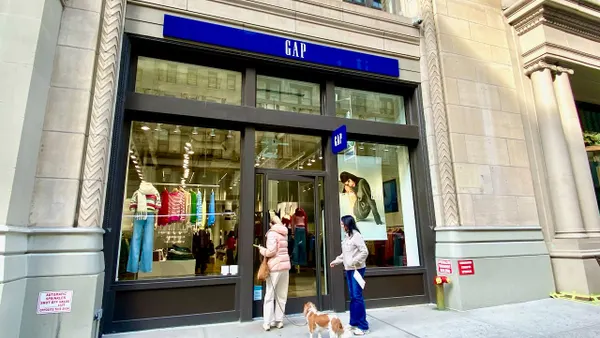Dive Brief:
- Sears Holdings on Thursday announced it will shutter 40 more stores as it winds through Chapter 11 and attempts to reorganize its business. They add to the 142 closures Sears announced when it filed for Chapter 11 in October.
- The closures — which include 11 Kmarts and 29 Sears stores — are slated for February, with liquidation sales starting late next week, the company said in a statement emailed to Retail Dive. Lands' End is a subtenant in five of the stores, according to court papers.
- The retailer described the store closings as part of a process "to accelerate its strategic transformation and facilitate its financial restructuring."
Dive Insight:
When Sears filed for bankruptcy last month, Chief Financial Officer Robert Riecker pointed to 400 stores that were profitable. That figure would be a good bet for the size of a post-bankruptcy Sears, if a post-bankruptcy life comes to pass for the ailing department store.
The company indicated at the beginning of Chapter 11 that it intended to sell its profitable stores as a going concern in bankruptcy, potentially to its chairman and majority shareholder, Eddie Lampert (who was also its CEO until the company filed). Meanwhile, Sears is looking to sell other major assets, including its home services business, which landed a stalking horse bid from Service.com this week.
But there are plenty of contingencies. A deal has to emerge. Lampert would have to produce financing. It would have to survive any objections from other creditors and stakeholders. And one group, a committee of unsecured lenders, has already indicated they indeed plan to object.
In a court filing, the creditor group alleged Sears' prior transactions with Lampert and his hedge fund, ESL Investments, in the years leading up to bankruptcy were potentially fraudulent and self-serving. (ESL in a statement to Retail Dive said the transactions were "valid and enforceable" and said it would vigorously defend itself against any claims in court.) As for the plan for Sears to sell a shrunken version of itself in Chapter 11, the creditors described it as apparently organized to allow ESL to buy "material assets of [Sears] at deflated prices (potentially by an inappropriate credit bid)."
And then there are the problems with suppliers, who are requesting their goods back from Sears en masse, and are reportedly keeping terms tight when shipping to Sears. The retailer may also have to make certain sales and/or earnings targets as it keeps operating into the fourth quarter. As the world saw with Toys R Us, failure to make such targets can send a bankrupt retailer over the cliff into liquidation.
But even supposing everything goes as planned for Sears, it's worth — once again — stopping to consider its incredible decline. By January 2010, the company operated more than 2,800 stores, with another 1,114 operating independently under its banners. And that was after decades of decline from Sears' former status as first among retail giants. A post-bankruptcy Sears would be about 10% of that total size.
Then again, a 400-store Sears, should such a thing emerge from Chapter 11, would still be infinitely bigger than no Sears at all.













